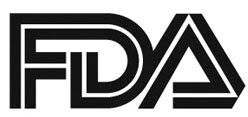FDA Approves Niraparib for Previously Treated HRD+ Advanced Ovarian Cancer
The FDA has approved niraparib for the treatment of patients with advanced ovarian, fallopian tube, or primary peritoneal cancer treated with ≥3 prior chemotherapy regimens and whose cancer is associated with homologous recombination deficiency positivity.

The FDA has approved niraparib (Zejula) for the treatment of patients with advanced ovarian, fallopian tube, or primary peritoneal cancer treated with ≥3 prior chemotherapy regimens and whose cancer is associated with homologous recombination deficiency (HRD) positivity.1
“Niraparib provides exciting new options for women fighting ovarian cancer,” Bradley J. Monk, MD, toldTargeted Oncologyabout the impact the approval will have on the community. “Importantly, activity is demonstrated for women with and withoutBRCAmutations.”
Selection for patients eligible to receive niraparib should be based off of an FDA-approved companion diagnostic for niraparib. The Myriad myChoice CDx test was approved simultaneously for use as a companion diagnostic to identify women with advanced ovarian cancer who are candidates for treatment with niraparib in this setting. The test determines HRD status throughBRCA1andBRCA2variants and by assessing the loss of heterozygosity, telomeric allelic imbalance, and large-scale state transitions for an indication of the genomic instability of the tumor.2
The approval is based off of findings from the phase II QUADRA trial of patients with advanced ovarian cancer who had HRD-positive tumors.3
The multicenter, open-label, single-arm trial enrolled 463 adult patients with metastatic, relapsed, high-grade serous epithelial ovarian, fallopian tube, or primary peritoneal cancer who previously received ≥3 lines of chemotherapy. The approval, though, is based off of the group of 98 patients with HRD-positive tumors.
In the trial, patients who did not haveBRCAmutations must have progressed within at least 6 months of their last platinum-based treatment and those who had prior PARP inhibitor exposure were excluded from the trial. HRD positivity was assessed using the Myriad myChoice CDx and blood germlineBRCAmutation testing.
Niraparib was administered at 300 mg daily continuously in 28-day cycles until disease progression occurred. The HRD-positive patient population was the primary focus of the trial with a primary endpoint in this group of investigator-assessed overall response rate (ORR) and duration of response (DOR), both by investigator assessment using RECIST 1.1 criteria.
The ORR was 24% (95% CI, 16%-34%) in patients with HRD positivity, consisting of all partial responses. The estimated median DOR was 8.3 months (95% CI, 6.5-not estimable).1
In patients with tumorBRCAmutations and platinum-sensitive disease, the ORR was 39% (95% CI, 17%-64%) compared with 29% (95% CI, 11%-52%) in patients with platinum-resistant disease and 19% (95% CI, 4%-46%) in patients with platinum-refractory disease.
Adverse events leading to dose reduction or interruption occurred in 73% of patients, with the most common events being thrombocytopenia (40%), anemia (21%), neutropenia (11%), nausea (13%), vomiting (11%), fatigue (9%), and abdominal pain (5%).
Niraparib was first approved by the FDA in March 2017 as a maintenance therapy for adult patients with recurrent epithelial ovarian, fallopian tube, or primary peritoneal cancer who are in complete or partial response to platinum-based chemotherapy.
References
- FDA approves niraparib for HRD-positive advanced ovarian cancer. FDA website. Posted October 23, 2019. https://bit.ly/35YNYya. Accessed October 23, 2019.
- FDA Approves Myriad’s myChoice® CDx Test to Help Identify Women Eligible for Treatment with Zejula® in Late-line Ovarian Cancer [news release]. Salt Lake City: Myriad Genetics, Inc: October 23, 2019. https://bit.ly/2Pgev3R. Accessed October 23, 2019.
- Moore KN, Secord AA, Geller MA, et al. Niraparib monotherapy for late-line treatment of ovarian cancer (QUADRA): a multicentre, open-label, single-arm, phase 2 trial.Lancet Oncol.2019;20(5):636-648. doi: 10.1016/S1470-2045(19)30029-4.